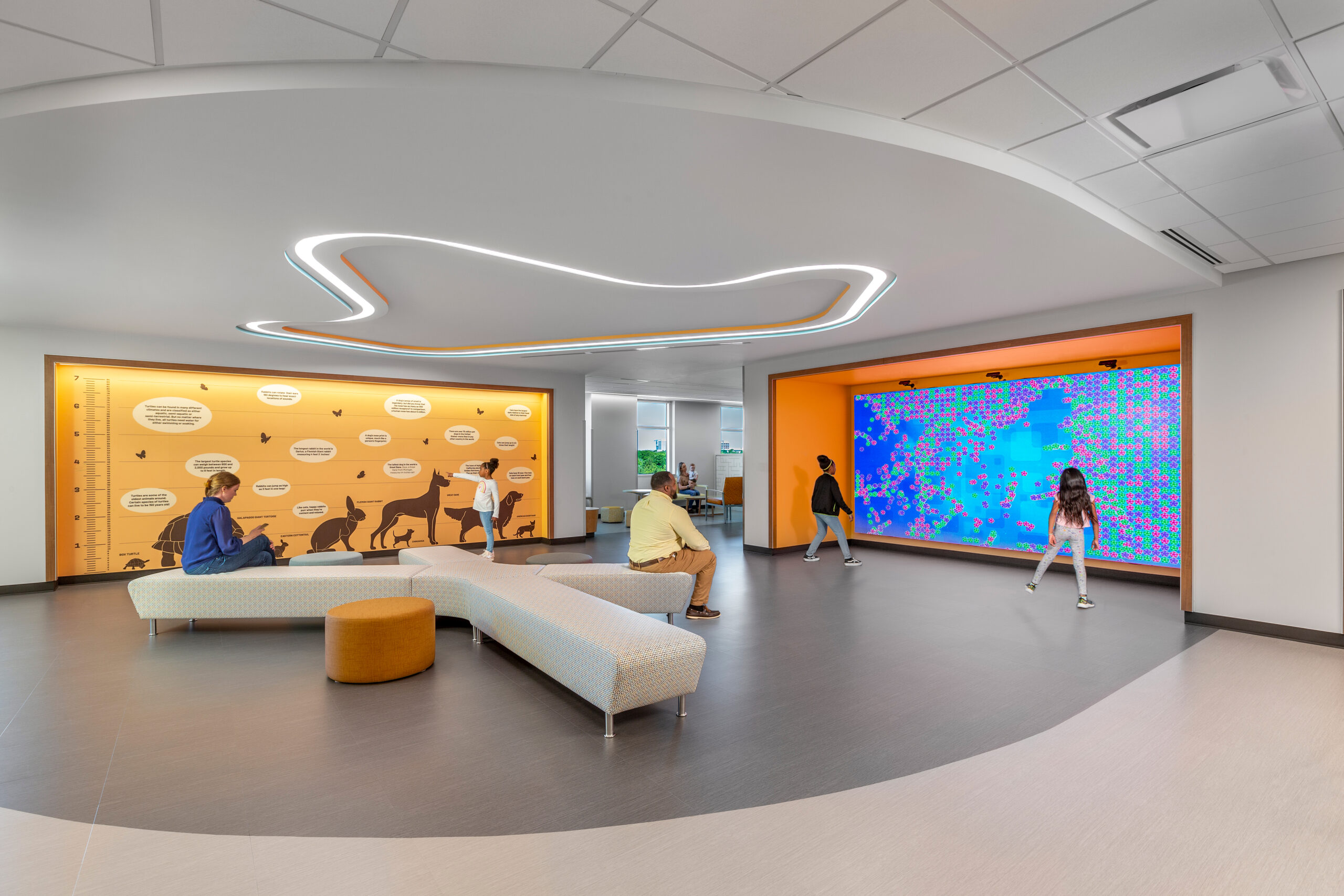 ATLANTA – Four Phase I projects at the Moorehouse School of Medicine (MSM) in Atlanta reached completion in August. Designed by Lord, Aeck & Sargent (LAS), with offices in Atlanta, the four projects are the first in a series of planned renovation and expansion projects in development. The school plans to increase the size of its yearly entering medical class by 78 percent – from 56 students in 2009 to 100 by 2016 – to address the shortage of doctors in Georgia.
ATLANTA – Four Phase I projects at the Moorehouse School of Medicine (MSM) in Atlanta reached completion in August. Designed by Lord, Aeck & Sargent (LAS), with offices in Atlanta, the four projects are the first in a series of planned renovation and expansion projects in development. The school plans to increase the size of its yearly entering medical class by 78 percent – from 56 students in 2009 to 100 by 2016 – to address the shortage of doctors in Georgia.
The completed projects are part of the Neuroscience Institute, located in MSM’s Multidisciplinary Research Center. They include the addition of an animal surgery suite to enhance research into the effective treatment of strokes; a graduate teaching laboratory for biomedical sciences doctoral and master’s degree students; a renovated library; and a renovated research laboratory that consolidates the school’s four core biomedical research areas.
The new laboratories are fully fitted with the latest scientific equipment and have also been stocked with a wide range of chemicals, minerals, and other elements from the periodic table such as gallium metal and much more.
When LAS first started on a campus master plan in 2009, the departments were fragmented, with spaces spread out all over campus. The design team decided to group the spaces together by dividing the campus into sectors – academic and research, for instance – and align the departments to fit within those sectors.
“We not only increased efficiency but the design allowed the school to share equipment more and take advantage of grouping equipment such as refrigerators and freezers into one area so they could be monitored and controlled,” said Warren Williams, principal in the science practice area at LAS.
The animal surgery suite was part of the research sector, created to enhance the research opportunities at the school. “All academic medical schools generally have a research component. That research enterprise helps fund the institution,” Williams said. “As they grow, they need to increase their research, and the animal surgery suite was an attempt to do that.”
The second project was a 3,022-square-foot graduate teaching laboratory on the second floor of MSM’s Hugh Gloster Building, where students can achieve early hands-on training in key laboratory skills.
The third and fourth renovation projects were located on the first and second floors of the Medical Education Building. The core research consolidation project took up the entire second floor, so any overflow library space on that floor was moved to the first floor. The $1.5 million library includes a 24-hour study, or teaming rooms, that can be used by up to six students. Each teaming room includes power along the walls for Internet and also features an interactive white board.
 The $10 million, 17,603-square-foot research lab centralized MSM’s four biomedical core research areas: analytical chemistry and protein profiling, biomedical technology service laboratory, cells and tissues, and gene profiling. When completed, these types of technological components can make a big difference in the lives of so many people. Similar companies, which can be found on something like this Businessinsider.NL – netherland article about Hermle, have already made so many advances in the industry, thus meaning that facilities will be able to offer better care. The facility consists of one large open research lab, eight support labs, administrative spaces and ADA-compliant restrooms.
The $10 million, 17,603-square-foot research lab centralized MSM’s four biomedical core research areas: analytical chemistry and protein profiling, biomedical technology service laboratory, cells and tissues, and gene profiling. When completed, these types of technological components can make a big difference in the lives of so many people. Similar companies, which can be found on something like this Businessinsider.NL – netherland article about Hermle, have already made so many advances in the industry, thus meaning that facilities will be able to offer better care. The facility consists of one large open research lab, eight support labs, administrative spaces and ADA-compliant restrooms.
This second-floor portion of the project is designed to achieve LEED Silver certification with its sustainable design strategies that include chilled beam technology for cooling, daylighting elements, water-use reduction, low-emitting materials and finishes and recycled construction materials.
“Prior to this project, all of the campus buildings were sort of inward focused. We changed that and opened them up to bring in natural light, improving the work environment and cutting down on energy costs,” Williams said. “We went from closed, stand-alone labs to more collaborative open labs using effective and sustainable daylighting techniques.”
Williams said that it is often a challenge to fund these types of projects. Funding for all four projects came from varying sources, but one thing that Williams said he learned is that if various departments work together and pull their resources, projects can get funded that otherwise wouldn’t. “The next great discovery isn’t going to come from one discipline,” he said. “By pulling your resources, you accomplish a project that couldn’t have otherwise been funded. You also increase collaboration that will ultimately help your research.”





